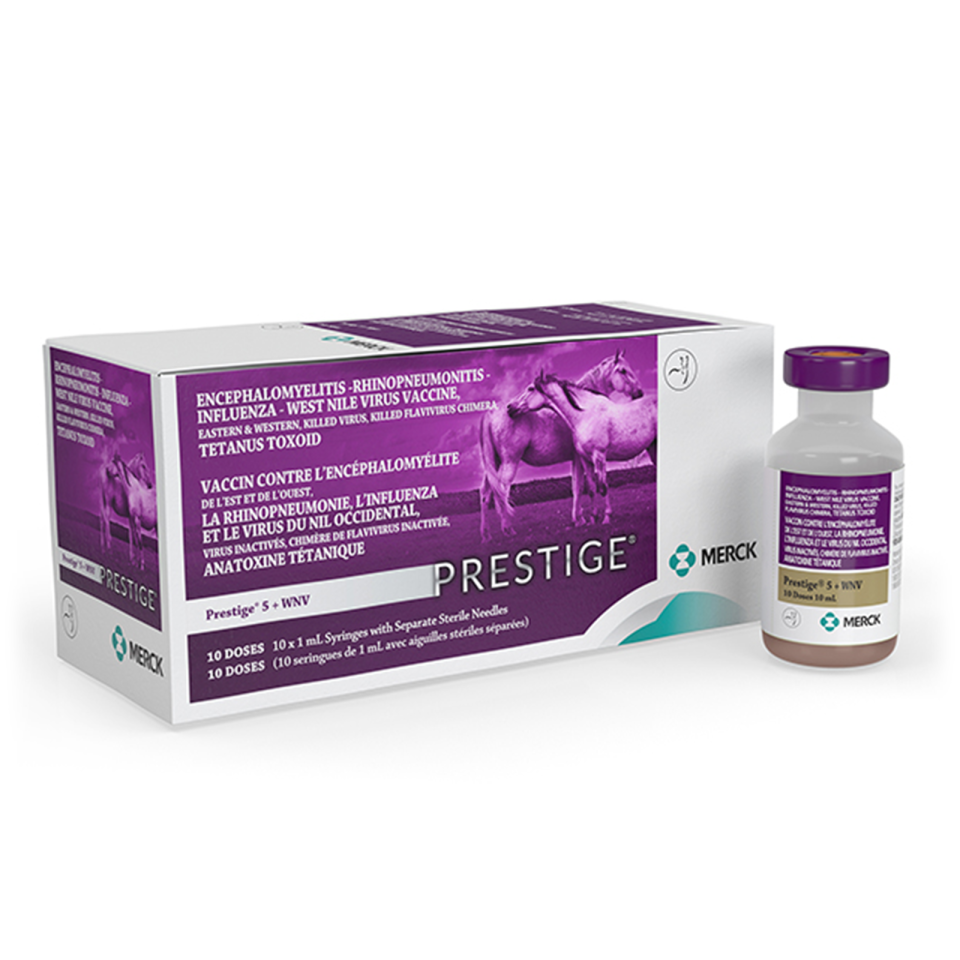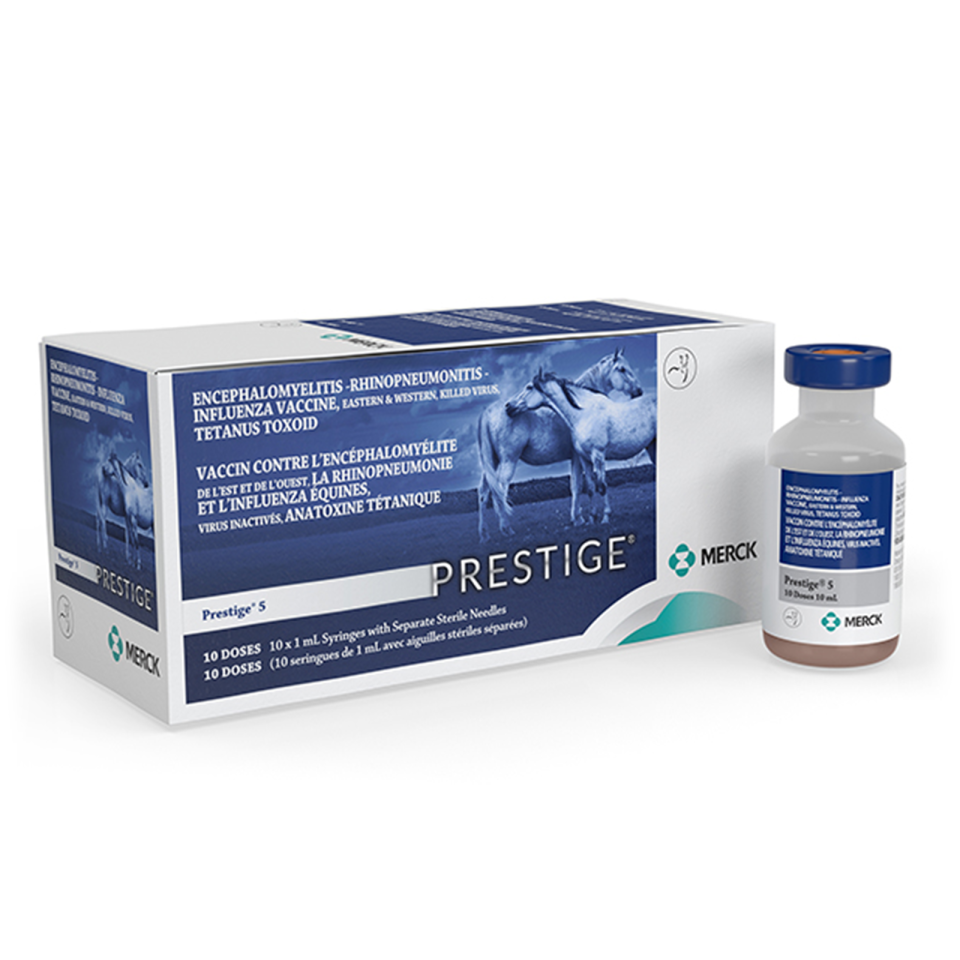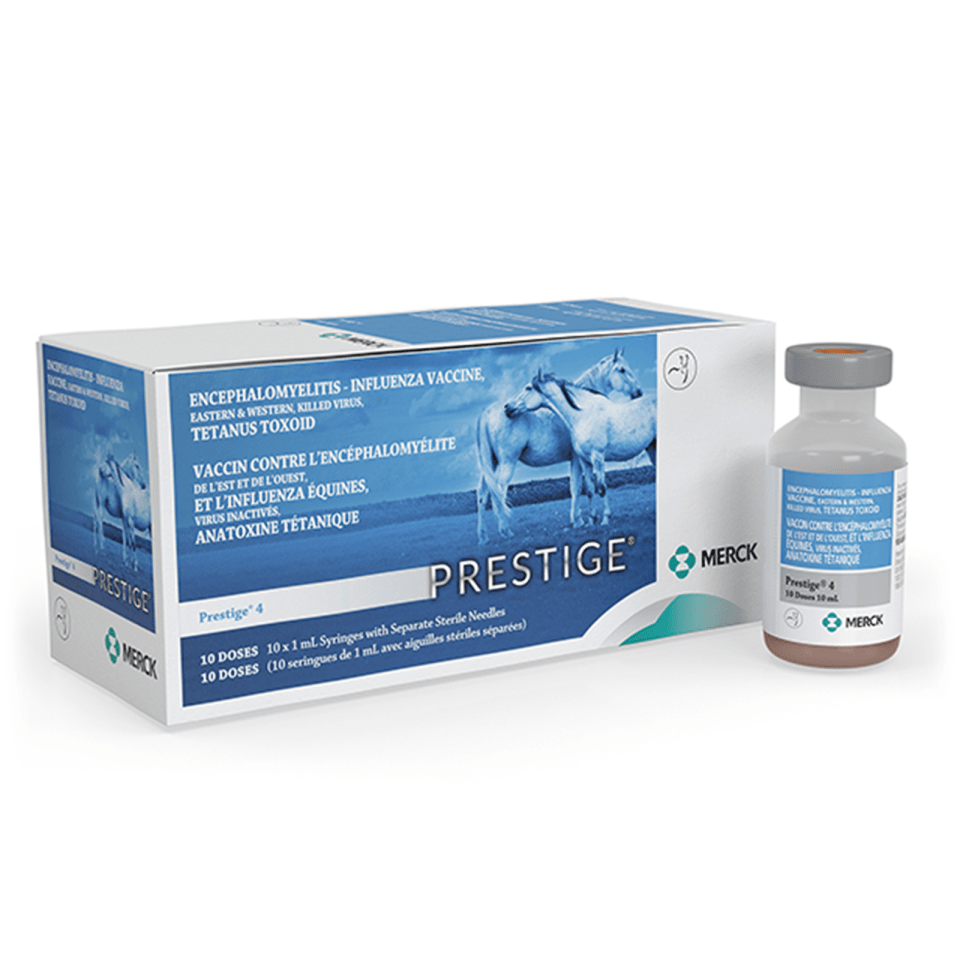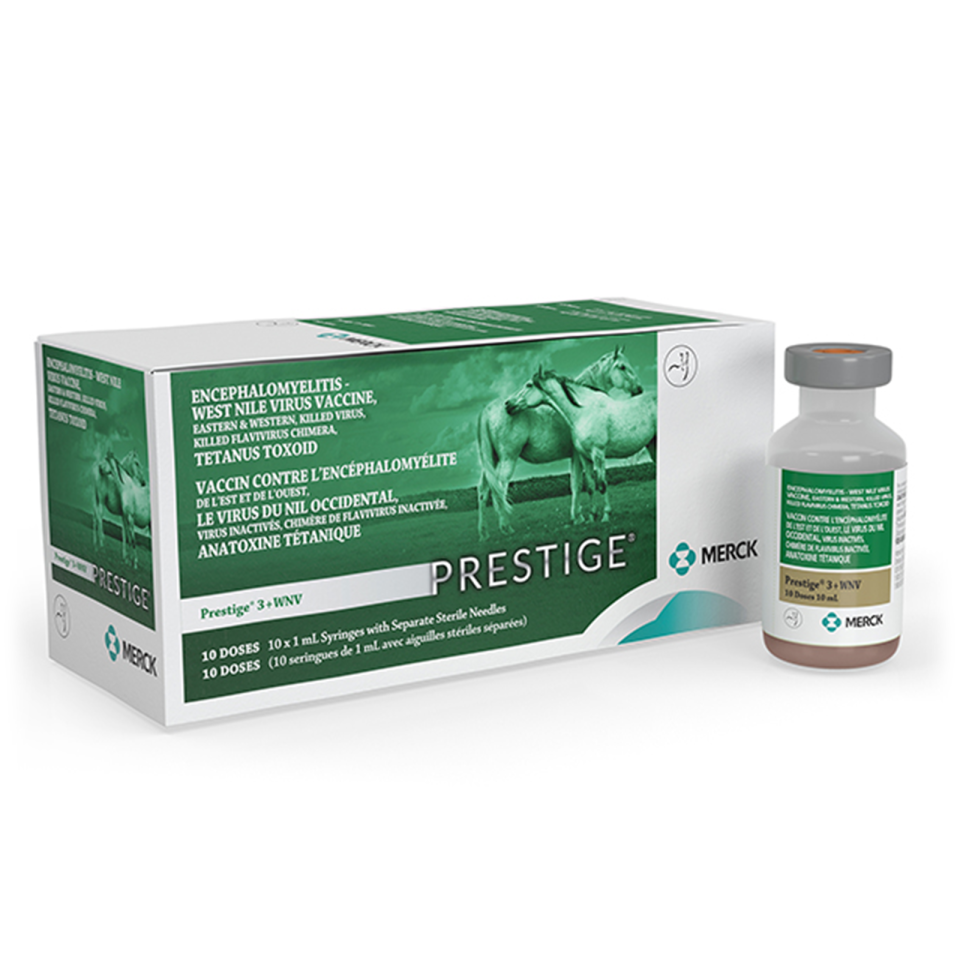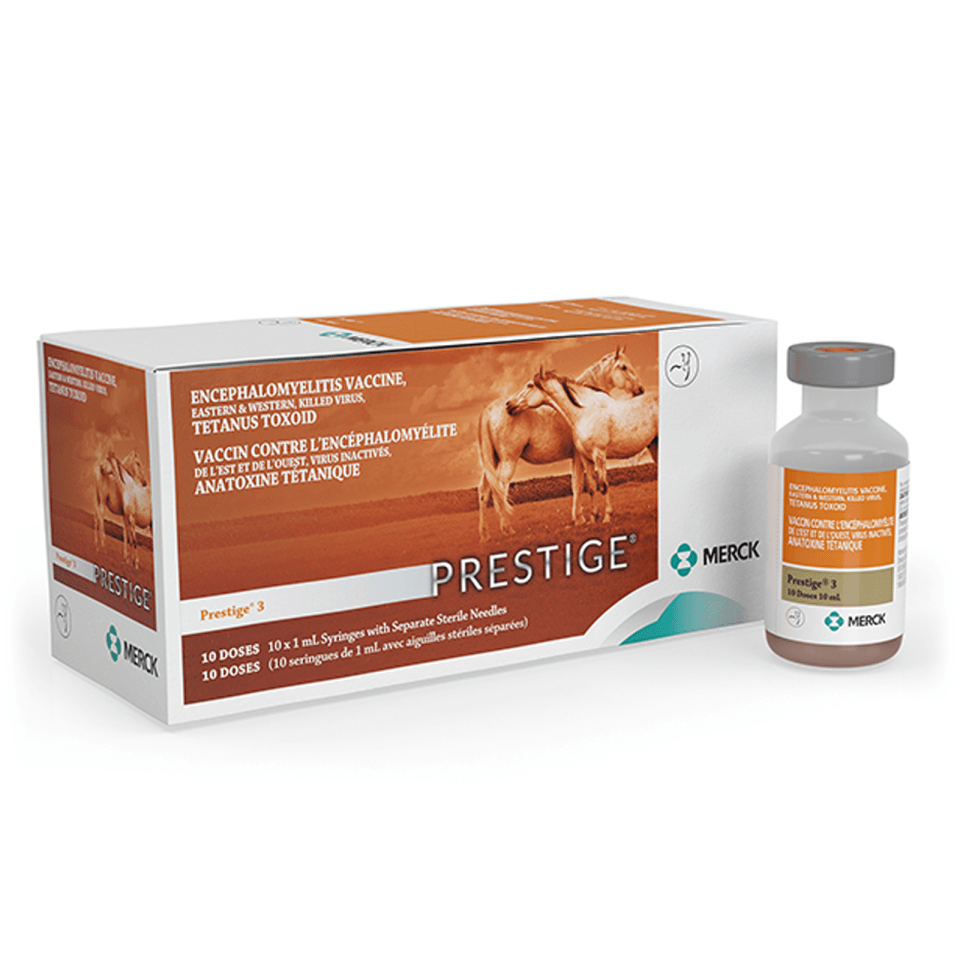
Tetanus
Disease Overview
Tetanus is an often-fatal disease caused by the toxin produced by the anaerobic, spore-forming bacterium Clostridium tetani. C. tetani organisms are abundant in soil, making infection an ever-present risk.
Merck Animal Health Solutions
Transmission
Infection usually occurs via a puncture wound (especially in the foot or muscle), laceration, surgical incision, or exposed tissue such as a foal’s umbilicus or postpartum mare’s reproductive tract (especially in the case of trauma or retained placenta).
Clinical Signs
- Localized stiffness proceeding to general stiffness
- Muscle spasms
- Difficulty chewing (hence the common name “lockjaw”)
- Erect ears; stiff, extended tail; dilated nostrils; prolapsed third eyelid
- Difficulty walking, turning and backing
- Extension of head and neck
- Stiff leg muscles causing “sawhorse” stance
- Sweating
- Increased heart rate
- Rapid breathing
- Mucous membrane congestion
- Temperature slightly above normal
Risk Factors
Because the tetanus bacterium is so common in the environment, all horses are at risk.
References
“Tetanus,” American Association of Equine Practitioners, accessed July 15, 2021,
aaep.org/guidelines/vaccination-guidelines/core-vaccination-guidelines/tetanus.
Henry R. Stämpfli, “Tetanus in Animals,” Merck Veterinary Manual, July 2021,
https://www.merckvetmanual.com/generalized-conditions/clostridial-diseases/tetanus-in-animals

